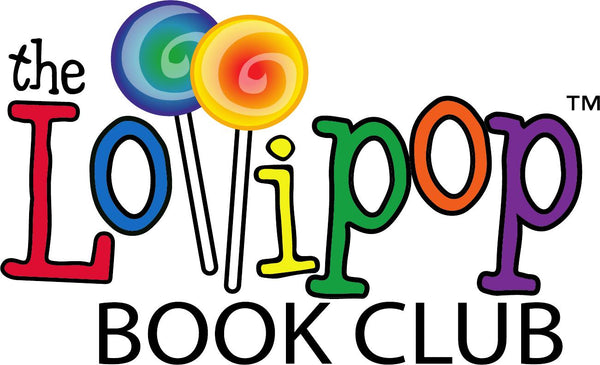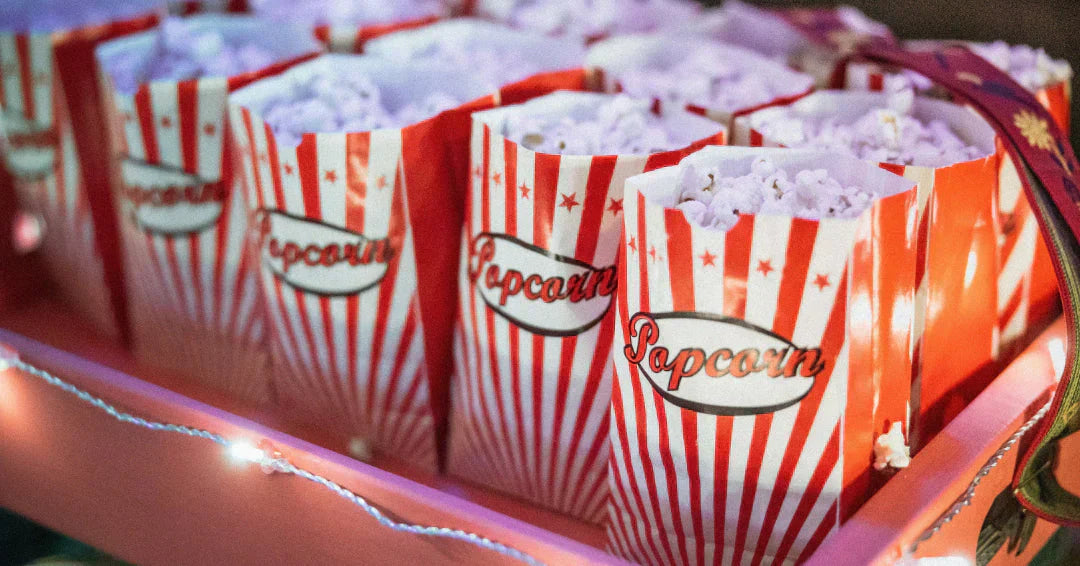Popcorn is a food that is enjoyed by lots of kids. For some, it is an occasional treat associated with going to the movie theatre. For others, popcorn is part of their regular rotation of snacks, packed in lunch boxes or as an after-school option for hungry bellies. The popularity of individual bags that can be tossed in the microwave for a few minutes has elevated popcorn to a new level. Little kids can make their own freshly popped batch without the help of parents. Here are some additional fun facts about popcorn to talk about next time your kids gather around with a bowl of their favorite buttery, salty snack.

Popcorn Facts You Never Knew
Those who can't get enough of this crunchy, salty delicious snack will enjoy learning all kinds of fascinating trivia about popcorn. The intrigue of popcorn facts stems from their surprising intersection of history, science, and cultural tidbits. These insights spark curiosity by revealing unexpected dimensions of a seemingly ordinary snack. Discovering the precise moisture needed for a kernel to pop, or its past as a breakfast staple, offers a fresh perspective. Even the journey from ancient civilizations to modern movie nights makes for a fun story to tell.
Strange But True Popcorn Trivia
Despite its common status as a snack food, popcorn's universal appeal makes its trivia excellent for breaking the ice at parties, enhancing movie nights, or enriching casual conversations. The shared experience of eating it draws people into the facts. Furthermore, popcorn trivia surprisingly encompasses history, agriculture, the physics of its pop, and even cultural trends, demonstrating the fascinating intersections of our world through this seemingly simple snack, making the information all the more engaging and lasting.

(1) Old Maid is the kernel at the bottom of the bag that never popped.
No matter how closely you follow the instructions, it is almost impossible to pop all the kernels without jeopardizing the entire bag. Adding a few more seconds on the microwave timer may garner a few more pops, but at the risk of burning the already perfectly formed popcorn. So while the outdated term "Old Maid" refers to unmarried women, it has also been playfully used to refer to the kernels that don't pop.
(2) Popcorn was invented more than 5,000 years ago.
Charles Cretor is credited with inventing the very first popcorn machine in the 1880s. However, archeologists have found evidence of popcorn from Peru perhaps dating back to 4,700 B.C. Archaeologists were fascinated to discover corn cobs filled with puffed kernels. It is highly likely that the indigenous were heating up kernels over flames when they, quite unexpectedly, witnessed the transformation when they started popping.
(3) Popcorn is very popular in Nebraska.
This produces approximately 250 million pounds of popcorn every year, more than any other place in America. Approximately 67,000 acres of farmland spreading across 30 counties is devoted to growing corn specifically to make popcorn. The rich soil content and irrigation supply make this ideal land for the crop. In fact, more than 30% of the popcorn distributed throughout the United States comes from Nebraska.

4) Pillsbury invented microwaveable popcorn.
Their product, rolled out to the market in 1982, was found in the frozen food aisle of the grocery store. The original product contained real butter, a perishable ingredient that required freezer storage. Also, food scientists could not preserve the coconut oil, used to heat the kernels, for extended periods on the shelf. Within 2 years after introduction, total sales skyrocketed to $53 million.
(5) Popcorn is a healthy alternative to junk food.
Compared to other crunch snack food like chips, popcorn is lower in both fat and calories. It's a great alternative to chips for parents who are trying to encourage healthier eating habits. Popcorn can also provide a good source of protein, which equates to about 3 cups for a full serving. Popcorn is also gluten free, making it a great option for people with dietary restrictions. Of course, all of this information assumes that popped corn is eaten in its simplest form without the addition of butter or salt. And forget about the kettle corn varieties which are high in sugar and other unhealthy additives.
(6) Why some kernels do not pop.
It may seem logical that some kernels need just a little more time to pop. However, the truth really lies in the water content inside each kernel. As it heats up, the water releases steam which eventually causes the pressure necessary to trigger a pop. So as frustrating as it may be to see some of those wasted kernels, keeping them on the stove or microwave a little longer is an exercise of futility.
(7) The biggest popcorn ball weighed 9,370 pounds.
Sac City, Iowa is home to the Noble Popcorn plant. Volunteers have joined together several occasions over the years in an attempt to break previous records set in this same town. The most recent record was set in 2016, consisting of a gigantic ball of popcorn weighing a whopping 5 tons. This spectacular creation required 900 pounds of corn kernels, 2,500 pounds of sugar, and 1,400 pounds of syrup! The enormous structure measured about 12 feet in diameter.
(8) National Popcorn Day is January 19th.
There is a holiday for almost everything and popcorn is no exception. The details around exactly who and when this day honoring popcorn was established. Some credit the Department of Agriculture for marking the holiday as a way to support farmers who grow corn. Other sources suggest it could have been the brainchild of a popcorn manufacturer in an effort to promote sales. An even more interesting idea is that the producer of a holiday calendar needed to add more reasons to celebrate in January. Regardless of the origin, it is a day for people to pop some corn and watch a movie together.

(9) There are two shapes of popcorn.
You may have never before considered the fact that popcorn comes in two very different forms. The first is called mushroom popcorn, aptly named for the round shape of the kernel after it has been popped. The combination of plant genetics and popping methodology cause the kernel to protrude from the side, resulting in an end product that resembles the vegetable from which its name is derived. The second is called butterfly popcorn, a whimsical name due to the wing-like protrusions. When the kernel reaches a high temperature, it bursts from the middle causing a fun, irregular-shaped snack most often served in movie theaters.
(10) Popcorn used to be a breakfast cereal.
Surprisingly, popcorn had a stint as a breakfast cereal in the late 19th and early 20th centuries in the United States. Before the rise of processed cereals like cornflakes, it was common to eat popcorn in a bowl with milk and sugar, similar to modern cereal. Even earlier, some colonial families enjoyed it for breakfast with sugar and cream. Notably, health advocate John Harvey Kellogg, of Kellogg's fame, championed popcorn as a nutritious breakfast, highlighting its whole-grain nature.

(11) Movie theaters used to be prohibited from selling popcorn.
Today, movie theaters are having a hard time maintaining profitability. A big portion of proceeds go to the studio producing the movies. Plus, with streaming services delivering quality content to homes, it has become even more difficult to get people in the door. Fortunately, popcorn is a big moneymaker due to the huge margins on this favorite cinema snack. But believe it or not, at one time it was banned from the movies. During the early part of the 20th century, only wealthy people could afford movie tickets. They believed that popcorn was a cheap snack more appropriate for fairs and carnivals. In fact, it is speculated that people were fined for sneaking in popcorn from home. It's a good thing everyone came around, including the wealthy, by recognizing that popcorn and movies are a match made in heaven.
(12) Berco's Popcorn makes the world's most expensive popcorn.
Aptly named Billion Dollar Popcorn, the product that put Berco's , a Chicago-based company, on the map comes with a hefty price tag. An 8 oz bag will set you back $25, 2 gallon tin is a $500, and a 6.5 gallon tin is $2,500. So what is so special about this particular popcorn? Well, according to the company's website, only the very best ingredients are selected including butter from a Vermont creamery, Nielsen Massey bourbon vanilla, and a pricey Danish product called Laeso Salt. The final step in making this caramel corn is adding 23 karat edible gold flakes to the sticky kernels.
(13) Dozens of popcorn flavors are sold by snack companies.
The timeless favorite is popcorn drizzled with melted butter and seasoned generously with salt. Over time, novelty snack companies, especially those that focus on gift giving, have developed dozens of popcorn varieties to tempt every taste bud. Caramel corn and cheddar varieties are commonly found on grocery store shelves. However, more creative and exotic flavors that are interesting include: cookies & cream, spicy buffalo wings, cinnamon, dill pickle, green apply, hot cheetos, black cherry, everything bagel, blueberry, vanilla root beer, neapolitan ice cream, pumpkin spice, bubblegum, and watermelon.
(14) Annual popcorn sales in the U.S. is approaching $4 billion.
The projected growth rate year over year is about 5.5%, indicating the market will reach $5.15 billion in sales within five years. More than half of worldwide popcorn sales occur in North America, where seasonal and new addition flavors are spurring growth. Target is primarily responsible for driving sales in holiday flavors, especially for Halloween and Christmas.

(15) Native American tribes believed spirits lived inside popcorn kernels.
Some Native American tribes had a unique take on popcorn: they believed that tiny spirits resided within each kernel. When the kernels were heated, these spirits would get angry and burst out with fury, causing the satisfying "pop!" It's a truly fascinating ancient explanation for how popcorn works.
(16) Scientists debate the perfect temperature for popping a kernel.
The ideal temperature for popping a popcorn kernel is surprisingly precise and a hot topic among scientists. Not every kernel will pop, but research shows that for that satisfying explosion, the kernel's internal temperature needs to hit around 180 degrees Celsius (356 degrees Fahrenheit). This superheats the tiny bit of water inside, turning it into steam so rapidly that it builds immense pressure and bursts the kernel's hull. If the temperature is too low, it's a dud; too high, and you'll end up with burnt, unpopped kernels.








